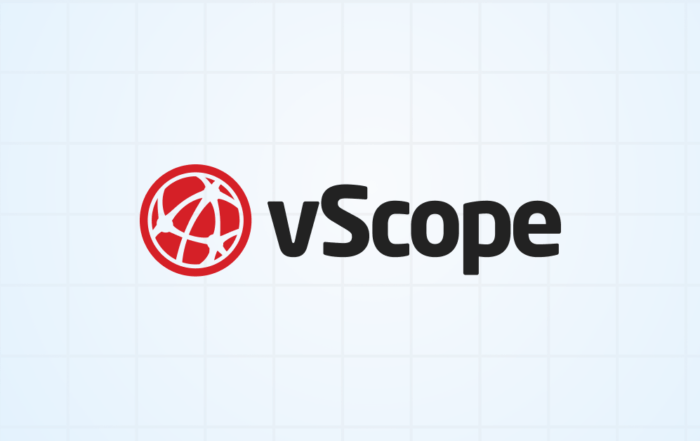PRODUCT UPDATE
Windows PowerShell and Just Enough Administration: Unleashing New Dimensions in IT Inventory with vScope
With PowerShell, you can now enjoy a more flexible and customizable approach to documenting and reporting on your IT assets. In the latest update of vScope, you can create more custom reports and IT documentation about your IT assets by including information about Windows Registry Keys. By using PowerShell for your Windows inventory, you will also benefit from more granular permission settings, a concept known as Just Enough Administration. There’s much to explore, so let’s dive right in!
Cherry-pick registry keys
vScope’s current inventory methods, WMI (Windows Management Instrumentation), and WinRM (Windows Remote Management) have been the backbone of our Windows OS information collection. The introduction of PowerShell perfectly complements these methods. It not only augments the data vScope can gather from Windows systems but also offers a more nuanced approach to data collection in general.

In the latest update of vScope (3.29), you can add registry keys to the Windows PowerShell credential and have vScope collect every key that is nested under the specified key. The key values can then be used to create tags from Discovery. Notice that vScope has always been collecting values from the registry, however, with this latest update, you can customize and extend vScope’s inventory even further.
What are Windows Registry Keys? A Windows Registry Key is a fundamental concept in the Microsoft Windows operating system. The Windows Registry is a hierarchical database that stores low-level settings for the operating system and for applications that opt to use the Registry. The Registry contains information, settings, and other values for programs and hardware installed on all versions of Microsoft Windows operating systems.
A few examples…
Why use PowerShell for collecting registry keys you might wonder? Well, let me give you a few examples of values that might interest you:
1. AutoAdminLogon for Automatic Login
Key: HKEY_LOCAL_MACHINE\SOFTWARE\Microsoft\Windows NT\CurrentVersion\Winlogon
Purpose: This key can be used to enable automatic login for a specific user account on a Windows machine, which can help set up kiosk modes or for systems that need to start without manual intervention.
2. Power Settings:
Key: HKEY_LOCAL_MACHINE\SYSTEM\Current\Control\SetControlPower
Purpose: This key can be used to manage power settings, like sleep mode and power-saving features, which are important for managing energy consumption and system performance in different environments.
3. Specifying the Default Browser:
Key: HKEY_CLASSES_ROOT\http\shell\opencommand
Purpose: This key allows you to set the default web browser at the system level. By changing the command path in this key, administrators can control which browser is used as the default across the organization.
4. Configuring AutoCAD License Server Information:
Key: HKEY_LOCAL_MACHINE\SOFTWARE\Autodesk\AutoCAD\Rxx.x\ACAD-xxxx:409AdLM
Purpose: These keys are used to specify the licensing mode (standalone or network) and the license server details for AutoCAD software. This is crucial for managing licenses in environments where AutoCAD is used extensively.
5. Controlling Java Update Notifications:
Key: HKEY_LOCAL_MACHINE\SOFTWARE\JavaSoft\Java Update\Policy
Purpose: This key can be used to enable or disable Java update notifications. Disabling Java updates might be necessary in environments where updates are managed centrally to ensure compatibility and security.
Enhanced Permission Management with Just Enough Administration (JEA)

A valuable feature in the latest vScope update is its support for Just Enough Administration (JEA). JEA allows IT administrators to define and implement precise, role-based access control to their IT environments. By leveraging JEA within vScope, you can delegate sufficient permissions for vScope to read the exact data you want it to read on each server/client asset. This granular level of control is not just about tightening security; it also streamlines workflows by ensuring that vScope has the appropriate access to what it needs to meet your inventory needs.
Prepared for future customizations
We will continue to develop further improvements to the PowerShell connector that allows for even more asset inventory and tag collection customizations. This will offer your organization a much more flexible approach to IT inventory! Here is the full guide on how you get started with Windows PowerShell, Registry Keys and Just Enough Administration.
Feel free to Get in touch if you need help to get started!
Learn More
Subscribe to our Newsletter
Let us share product updates, news, and market insights directly to your inbox.
Read More…
How to rightsize databases with vScope
Phase out unused databases in your IT landscape and save budget on operations and licenses.
vScope 3.32.0
vScope 3.32 3.32.3 JULY 3, 2025 Improvements Filter content in library based on asset type for easier browsability. Added additional AWS asset types and optimizations, including new Properties for
Full Control Over Users and Issues in Jira with vScope
Gain complete control over your Jira users and issues with vScope's new integration. Effortlessly track licenses, identify cost savings, and connect issues with IT services for enhanced efficiency and documentation.
Say Goodbye to Manual Warranty Management for Lifecycle Handling
Show valuable warranty data side-by-side with other asset data with vScope's latest features: Warranty.
Securing Your Windows Data Center: Best Practices for IT Discovery Read Accounts
Learn how to securely set up IT discovery in your Windows network. Learn about managing permissions and access for read accounts using Microsoft technologies.
Tackling Application Chaos: Why Comprehensive Windows Application Inventory Matters
Discover the importance of a comprehensive Windows application inventory. vScope helps your IT team effortlessly achieve visibility, compliance, and security.



